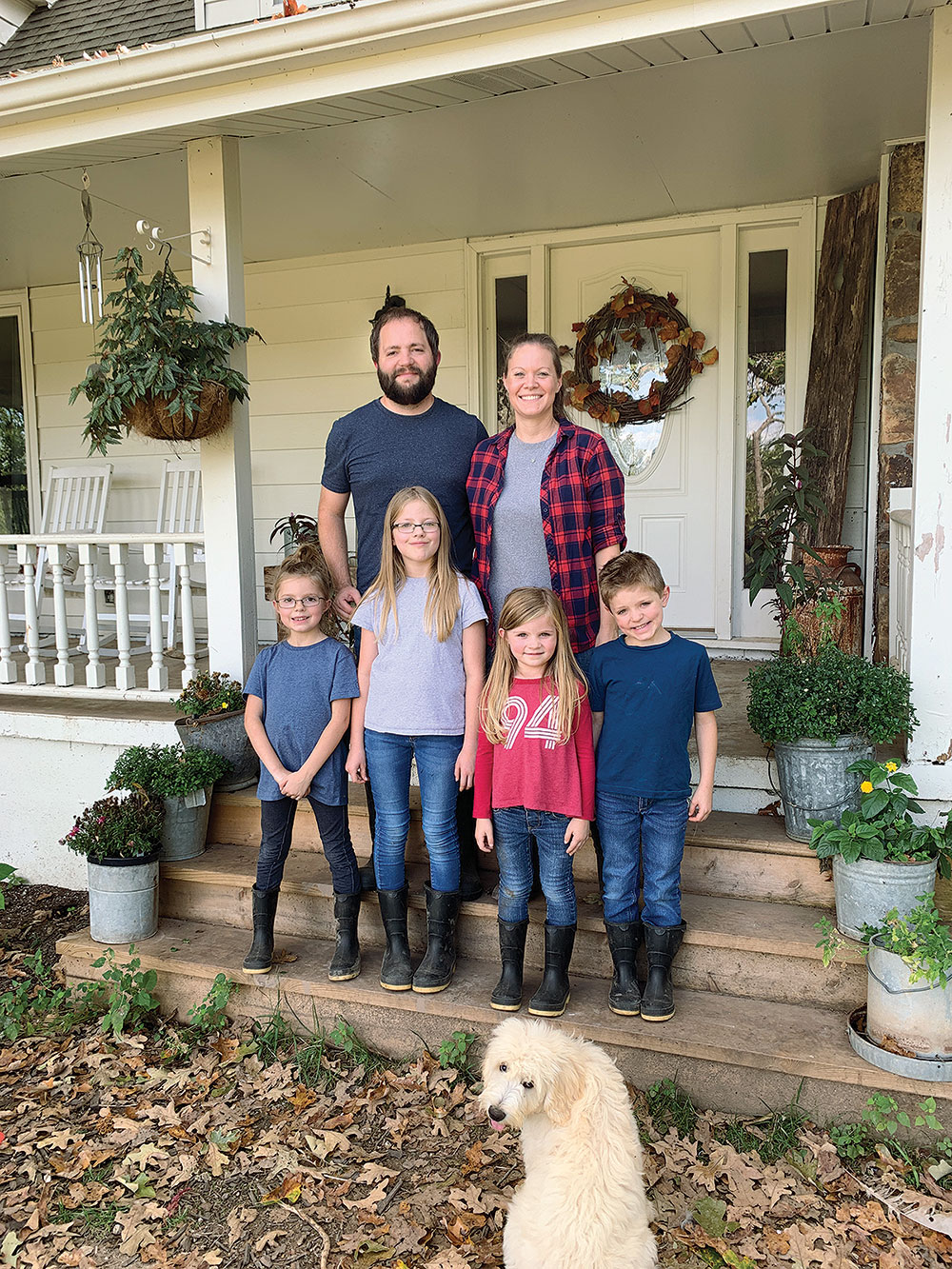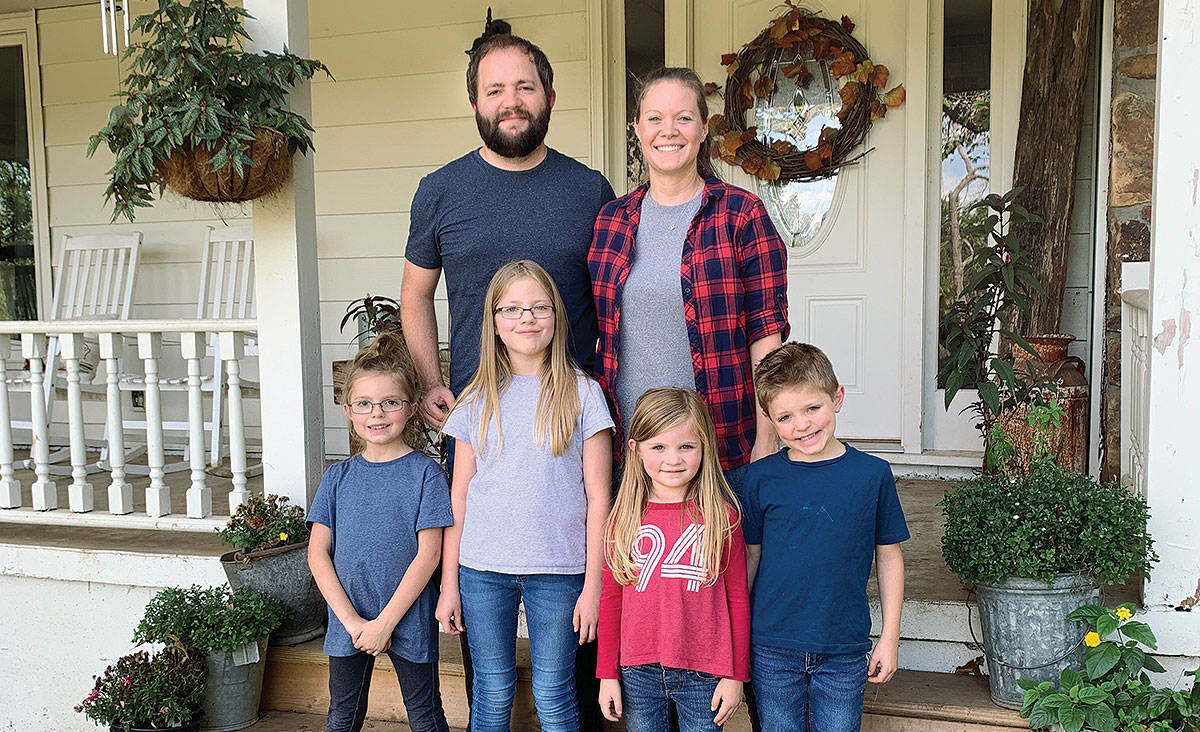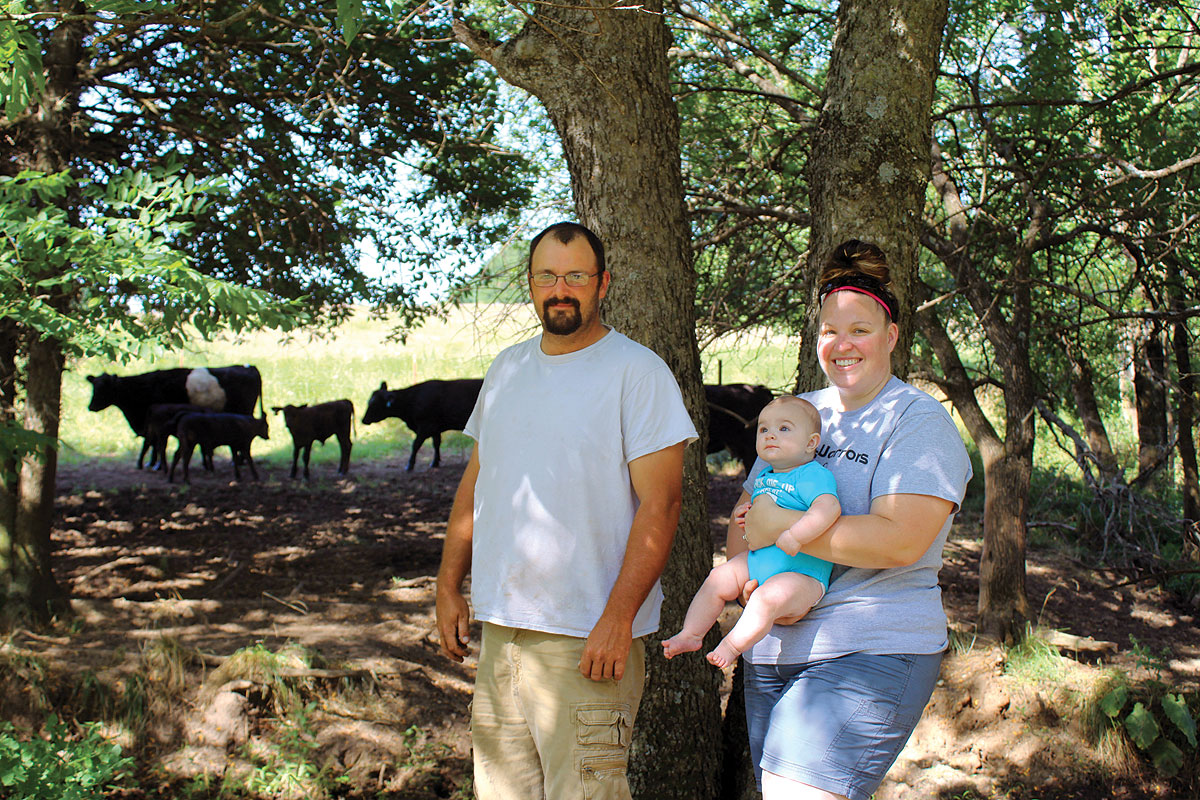 Couple revitalizes a property to build a thriving and growing farm
Couple revitalizes a property to build a thriving and growing farm
Aron and Midge Vad moved from Springfield, Mo., to what’s now known as Honeysuckle Farmhouse in 2016. They, along with their four children, Eva (9), Ella (8), Easton (7), and Eden (5), share the duties of farm life.
When the Vad’s purchased the property in Pleasant Hope, Mo., the old farmhouse had sat vacant for almost eight years and was overgrown with honeysuckle. Midge has always loved honeysuckle, describing it as an “obsession,” so the name Honeysuckle Farmhouse was an obvious fit.
Aron works full-time as the vice president/CFO of finance at Global University in Springfield, so the work on the farmhouse often extended late into the evening, Midge said. Now that they’re mostly finished with inside projects, they’ve begun clearing the property of old trees and making room for a new driveway.
The daily routine on the farm includes feeding and watering the chickens, ducks, guineas, cows and pigs. Nine-year-old, Eva, has an egg business, so she is responsible for taking care of the chickens, including collecting, washing, inspecting and packaging the eggs.
The Vads have partnered with Tie & Timber Beer Company in Springfield to receive their spent grain. The brewed beer results in boiled down barley and removes sugars, which is good for the animals, providing carbohydrates and protein.
The Vads’ homesteading journey has led them to raise a couple of Holstein cows and several Wagyus. They chose Holsteins to have a milk source, and the Wagyu’s for the high-quality beef, being high in omegas and fat content that’s healthy for you. People also use the fat (lard) to cook with for its flavor and quality. The Vads purchased the Wagyu’s from a farm in Mountain Grove, Mo.
Along with the cattle, the Vads have several Mangalitsa pigs, which are a Hungarian breed. Midge says they are the “Kobe beef of the pork world.” Their meat is much healthier for you, and they’re pasture-raised, except for the spent grain that they get from Tie & Timber. Midge says they love belly rubs and are very smart. The pigs are raised as naturally as possible, without antibiotics or hormones.
Keeping the number of cows and pigs small enough that the land can provide for them and keep them healthy is important to the Vads. The livestock are pasture-raised and are on rotational grazing, with the cows following the pigs. The next step for the Vads is to get a chicken tractor, which would follow the cows. Eventually, they would like to incorporate some milk goats into their farm to make soap, caramel and experiment with other goat-milk products.
Besides the livestock, Midge and Aron have been growing garden produce each year, including cantaloupes, watermelon, zucchini, tomatoes, squash, beans and more. They recently received a grant for a 90-foot greenhouse and plan to utilize it to garden through the winter.
Midge said their goal is to start a CSA (Community Supported Agriculture) next year with 15 to 20 members. They already have a list of people who want to be a part of it, and would like to grow it each year, ultimately having 100 to 150 members.
For the past three years, Midge and Aron have hosted Fall at the Farm. The yearly event came about because the Vads wanted their children to experience fall activities, but found it was expensive for their family to do fall activities such as hayrides and painting pumpkins. They decided to do it themselves on their farm. They charge $2 per person, which includes a full meal, Christmas lights through all the trees, a live bluegrass band on the stage through the night, a hayride through the pastures, pumpkin painting and a bonfire with s’mores. Everyone is allowed to walk around and see the animals, too. The goal is to provide a fun, fall experience for everyone.
To this point, the event has been by word of mouth, open to people they meet in the community, along with neighbors and friends. However, they’re considering making it a public event in the future. Midge said she loves event planning, so this is right up her alley.
Midge jokes that she’s very much “all in.” She gave the example of when they brought home their first two pigs from Texas – in the back of their van. Because they had no fencing established on the property, they had to figure out what to do with the pigs when they arrived home at midnight.
Aron said he prefers to take his time and figure things out. They seem to balance each other out between Midge “jumping all in” and Aron being more reserved.
“She likes to build the fence around the animals, I like to build it before we get the animals. That’s the difference,” Aron said.







